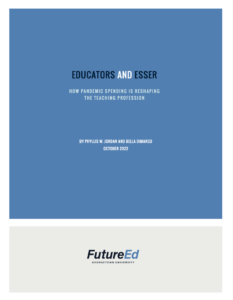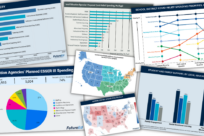While teacher shortages dominated education news coverage during the summer, the tremendous amount of federal pandemic-relief money that states and school districts are pouring into the profession—and the funding’s substantial consequences for longstanding policies and practices in the more-than-three-million-member occupation—has received far less attention. Local education agencies are on pace to spend as much as $20 billion on instructional staff under the 2021 federal American Rescue Plan, making teachers the single largest investment under the plan nationwide.
during the summer, the tremendous amount of federal pandemic-relief money that states and school districts are pouring into the profession—and the funding’s substantial consequences for longstanding policies and practices in the more-than-three-million-member occupation—has received far less attention. Local education agencies are on pace to spend as much as $20 billion on instructional staff under the 2021 federal American Rescue Plan, making teachers the single largest investment under the plan nationwide.
To understand state and local policymakers’ strategies for bolstering teaching resources in the wake of the pandemic, FutureEd analyzed the Covid-relief spending plans of 5,000 school districts and charter organizations representing 74 percent of the nation’s public-school students. And we examined additional documents and conducted a range of interviews to gauge how the nation’s 100 largest school districts plan to reinforce their teaching ranks with the Elementary and Secondary School Emergency Relief (ESSER III) aid.
The result is a comprehensive picture of state and local spending of recovery resources on the nation’s teaching force. And it’s clear that momentum is building behind several spending strategies with important policy implications, including an emerging commitment to extra pay for longer hours, and bonuses that break with traditional pay schedules to combat widespread teacher shortages.





